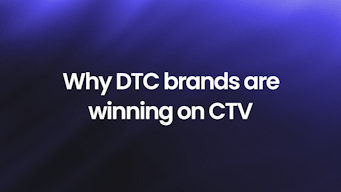TV Marketing Strategies: 5 Proven Ways To Run a Successful Campaign
Are you looking to craft a winning TV marketing campaign that drives brand awareness and maximizes ROI?
If the answer is yes, then you're in the right place.
In this blog, you'll discover the top five TV marketing strategies for creating successful TV advertising campaigns—designed to help you connect with your audience, increase engagement, and elevate your brand's presence.
Here’s what you can expect:
- A breakdown of essential TV marketing strategies that ensure optimal reach and impact
- Practical examples of how targeted messaging and creative storytelling can boost your campaign's effectiveness
- Insights on performance measurement to fine-tune your approach and drive better results.
Let's examine the 5 key steps that will help you elevate your brand and reach your TV marketing goals.
These TV marketing strategies are actionable and designed to work for any brand, big or small
1.Define Your Target Audience
Understanding who you're speaking to is the first step in crafting a successful TV ad. It’s not just about demographics like age or gender but about understanding their interests, needs, and behaviors.
You can tap into your audience's motivations, and you’re much more likely to grab their attention.
Key Tactics:
- Conduct market research to gather insights into your audience's preferences.
- Use your customer data to build detailed audience personas.
- Identify key trends based on your past customer behaviors and ad performance.
Example:
A luxury watch brand might target high-income professionals by airing their ads on premium channels like CNBC during prime-time financial news hours. This aligns with their audience’s interests and viewing habits
Why It Works:
You're not just wasting airtime by targeting your ads to the right people. You ensure your message resonates with viewers who are more likely to engage, leading to better results and higher ROI.
2. Create a Compelling TV Ad Concept
A great TV ad doesn’t just sell a product; it tells a story that resonates.
Whether humor, empathy, or inspiration, your ad should evoke emotions that create a memorable connection with viewers.
Key Tactics:
- Develop scenarios your target audience can relate to—something that speaks to their pain points or desires.
- Use emotions like humor, nostalgia, or empathy to build a connection.
- Ensure your message remains clear so the creative elements don't overshadow your brand’s core value.
Example:
The Always #LikeAGirl campaign used emotional storytelling to challenge gender stereotypes. This deeply connected with its audience and sparked a wider conversation, improving the brand's image.
Why It Works:
A captivating concept builds long-term brand loyalty. People remember how you made them feel, not just what you sold them.
3. Select the Right TV Channels and Time Slots
Even the best ad won’t succeed if shown to the wrong audience or at the wrong time. Strategic placement ensures your ad reaches viewers when they're most likely to engage with it.
Key Tactics:
- Analyze the demographic breakdown of various channels to ensure your audience aligns with their viewership.
- Schedule your ads during programs your target audience regularly watches, such as prime-time news or late-night talk shows.
- Consider regional programming if you’re looking to target specific geographic areas.
Example:
A children's toy brand will run ads on family-friendly channels like Nickelodeon during Saturday morning cartoons, which their target audience—parents and kids—will most likely watch.
Why It Works:
The right timing and placement amplify the impact of your message, maximizing engagement and effectiveness.
4. Emphasize High-Quality Production and Visual Appeal
The quality of your ad directly impacts how it’s perceived. High production values draw attention and enhance your brand's credibility and trustworthiness.
Key Tactics:
- Ensure crisp, clear visuals, along with professional sound and editing.
- Keep your brand front and center, but don’t let it overshadow the storytelling. Balance is key.
- Invest in high-quality production that feels polished, not overdone.
Example:
Nike’s "You Can’t Stop Us" ad is an excellent example of using exceptional visuals and editing to create an inspiring, impactful message that resonates globally. It wasn’t just the story that caught the attention but how it was delivered.
Why It Works:
Visually engaging ads hold attention and increase the likelihood of your message being remembered. High-quality visuals convey a sense of professionalism and credibility.
5. Measure and Optimize Campaign Performance
Once your campaign is running, you need to track its performance. Measurement lets you understand what’s working, what isn’t, and where to adjust your strategy for better results.
Key Tactics:
- Define clear KPIs such as video completion rates (VCR), reach, and conversion metrics.
- Continuously monitor ad performance and adjust factors like frequency, timing, or creative content based on data.
- You need to A/B test different ad variations to see which resonates more with your audience.
Example:
A food delivery service might track promo code usage and optimize its ad placements around dinner-time programming, ensuring it reaches users when they’re most likely to order food.
Why It Works:
Optimization allows you to refine your strategy for ongoing improvement. By analyzing and adjusting in real-time, you maximize the efficiency of your campaign, saving both time and resources.
Even with these strategies in place, TV marketing has its challenges. Let’s explore these challenges and learn how we can overcome them.
Challenges in TV Marketing and How to Overcome Them
Here are the key challenges identified:
- Awareness: Many marketers remain unaware of the benefits and capabilities of Connected TV (CTV), which can hinder their adoption of this innovative advertising approach.
- Cost: Producing and airing television ads can be prohibitive, especially for smaller businesses. This includes expenses for production, airtime, and potential repeated placements to enhance effectiveness.
- Education and Resources: Many advertisers lack the necessary education and resources to implement CTV strategies effectively.
- Limited Targeting Options: Traditional television advertising often struggles with precise audience targeting compared to digital platforms.
- Diminished Viewer Attention: With the rise of on-demand services, many viewers skip ads or tune out during commercial breaks. This trend raises concerns about the effectiveness of TV commercials in capturing audience attention.
- Difficulty in Making Changes: Making changes can be costly and time-consuming once a TV ad is produced and aired. This rigidity can be a barrier for brands looking to adapt their messaging quickly.
Despite the challenges in television advertising, there are effective platforms to improve your TV marketing efforts.
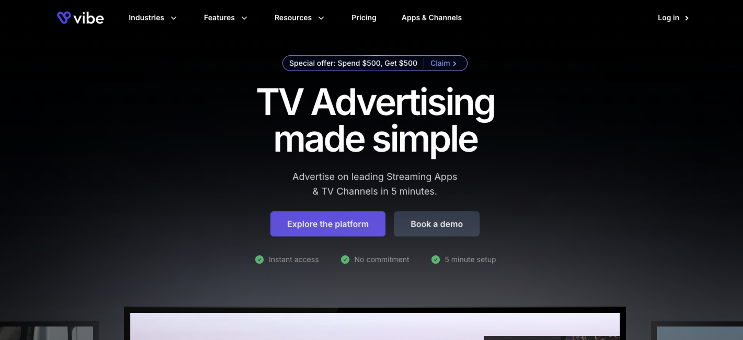
One such platform is Vibe, which allows you to set up and run TV advertising campaigns over 500+ channels within minutes Here’s what makes Vibe a better choice for brands looking to optimize their TV advertising:
- Vibe automates ad placements across over 500 streaming channels, including sports, movies, and local news.
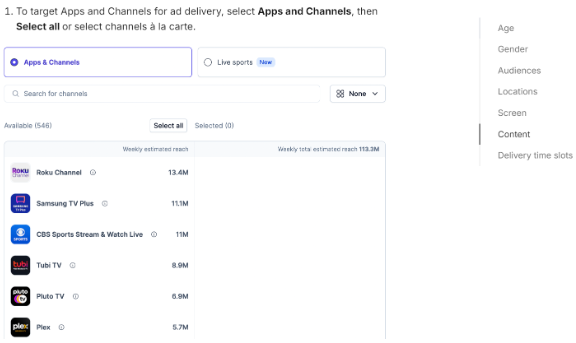
- Vibe analyzes real-time data to ensure that ads are delivered to the right audience at the right time.
- Brands can precisely target audiences based on location, demographics, interests, or purchase intent.
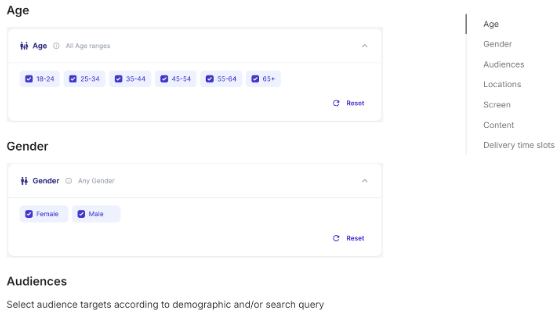
- : Vibe offers budget-friendly options starting at just $500, with CPM rates between $15 and $35.
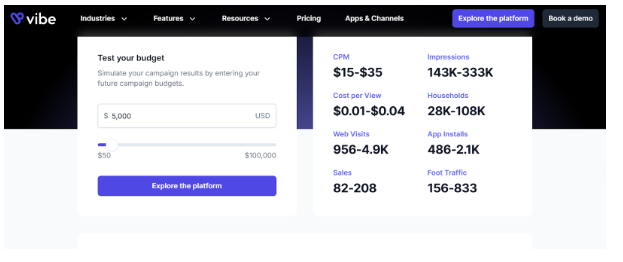
- You can monitor campaign success through real-time insights on conversions, impressions, and audience engagement.
- The Vibe AI Assistant recommends ideal channels and targeting strategies tailored to your campaign goals. Additionally, Vibe Studio allows users to produce high-quality TV ads quickly, even without prior experience.
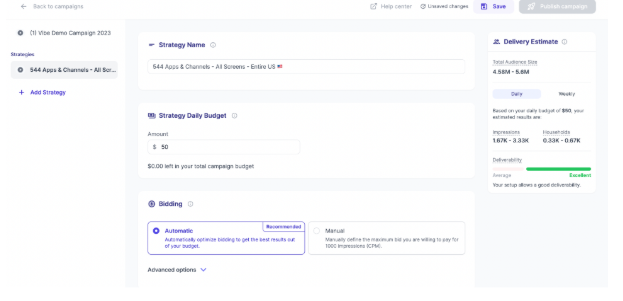
By integrating Vibe into your TV marketing strategies, you can effectively navigate common challenges and create impactful advertising campaigns that resonate with your target audience.
Conclusion
Now that we’ve covered the top 5 TV marketing strategies for a successful campaign let’s recap the key points.
When planning your next TV campaign, keep the audience, the story, and quality at the forefront of your strategy.
Following these approaches can unlock TV advertising's full potential to boost brand awareness, engagement, and conversions.
To further improve your campaign's effectiveness, consider using platforms like Vibe.
Vibe offers advanced targeting capabilities and creative tools designed to amplify the impact of your TV ads.
With the right strategies and tools in place, you can elevate your TV marketing efforts to new heights!


